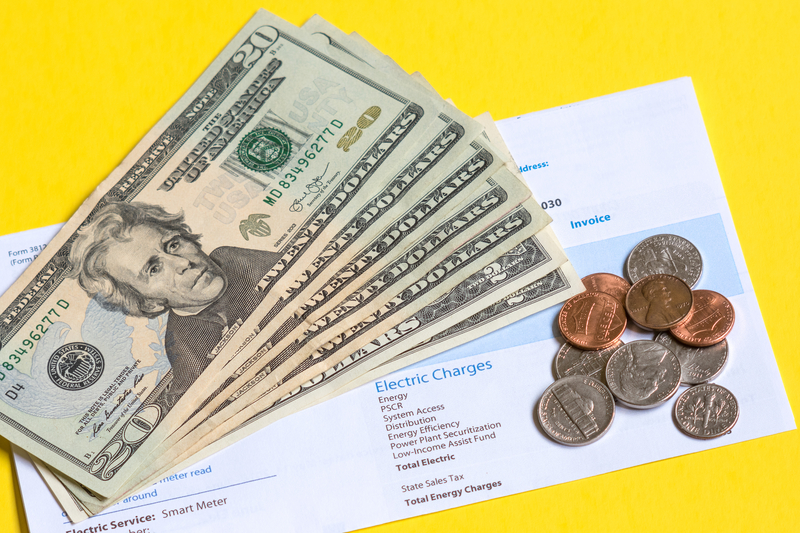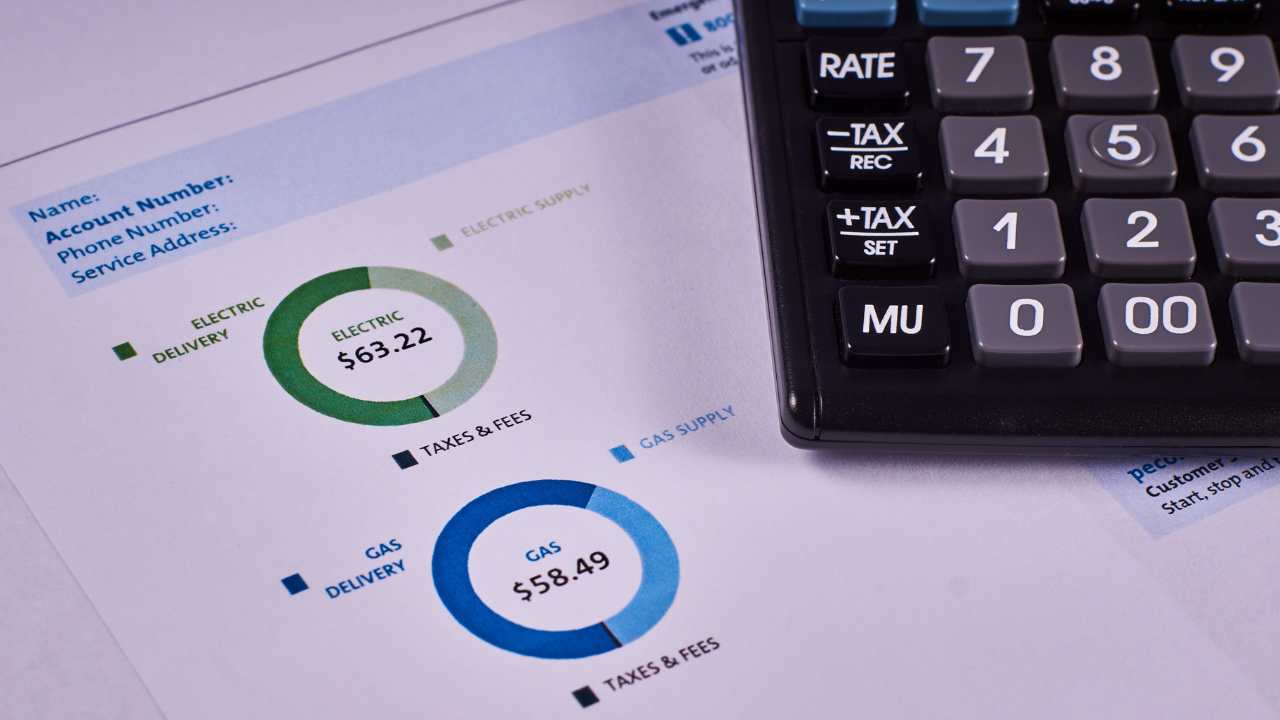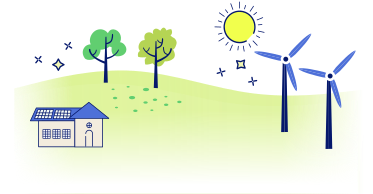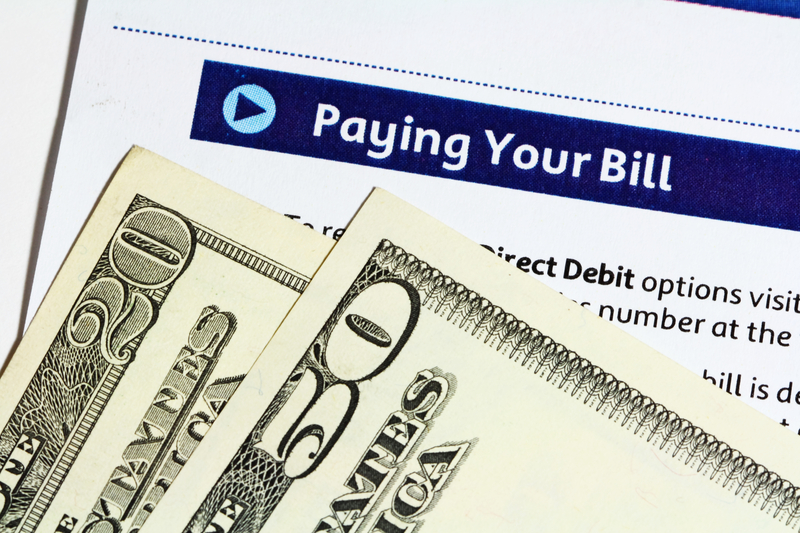This article is your complete guide on how to read electricity bills in 2024—just get your first electric bill. Wondering what you’re looking at when reading the charges? Our guide will help break down what is on the common electric bill and what it means.
We hope you find this post helpful and if you are looking for different ways to become more energy efficient be sure to check out our energy savings calculator!
The Energy Professor Electricity Rate Check Tool
How to Read Your Electric Bill

So, you’re wondering how to read your electric bill and don’t know where to start. The fact of the matter is, you are not alone! There is still a vast majority of small businesses and homeowners who need tips on how to read an electric bill. Especially with how electricity prices have been on the rise and people are tracking their budgets better.
To help understand how to read electricity bills, we are going to start with the basics.
The Basics
- Account Information: This includes your name, address, and account number. It’s how the utility company identifies you.
- Billing Dates/Billing Period: This tells you the start and end dates for the period you’re being billed for, usually a month.
- Electricity Usage: This shows how much electricity you used during the billing period, measured in kilowatt-hours (kWh).
- Delivery/Transmission Charges: These are the costs for delivering electricity to your home, including maintaining power lines and infrastructure.
- Rate in Kilowatt-Hours (kWh): This is the price you pay for each unit of electricity you use. It’s usually listed in cents per kWh.
What does the electric bill include?
An electricity bill breakdown will typically include the charges for the electricity that you used for your billing period, additional fees, taxes, and surcharges. Certain utility companies will provide a breakdown of your electricity usage and tips and how you can lower it. Your electric bill will also include important information like your account number, electricity rate, and contact info for your utility.
Related post: Complete Guide on Solar Leasing
What is the Electric Delivery and Electric Supply?

Certain charges on your energy bill are a result of the production, transportation, and maintenance of electricity. That comes with the supply and delivery charges. We are going to briefly cover these supply and delivery charges to help you learn how to read your electric bill.
What is the Electricity Delivery Charge?
The electricity delivery charge on your electric bill is derived from all of the costs of delivering electricity to your home. This rate is set by your local utility company and comes from the costs to transport, store, and maintain electricity for you or your small business. You typically have no control over these costs unless you can switch energy providers.
When you’re learning how to read your light bill, you might see these three charges coming from the delivery side of things:
- Transition – Transition charges come from your Public Utility Commission meeting your state’s legal requirements and recovering costs.
- Transmission – The Transmission charge comes from getting the electricity from the power plant to you through high-voltage lines into your home or small business.
- Distribution – Distribution charges come from utility companies maintaining and building electricity infrastructure like power poles and local lines. It costs money to get electricity to you!
What is a supply charge in the electricity bill?
The supply charge is a bit more easy to understand when you’re learning how to read a power bill. The supply charge on your electric bill is simply just how much energy you’ve used! Your supply charge will be the total cost of how much energy you’ve generated in your billing period.
In the section where we talked about kWh, it is the actual process of using your utility company’s kWh rate and charging you based on usage. You are being charged based on how many kWh you’ve used in your billing period is the supply charge.
Related post: Complete Guide to Electric Delivery Vs Electric Supply
Other Things to Know About My Electric Bill

Electricity Account Number
Frequently found on the top right-hand side of the bill (or beneath your customer contact details), the electricity account number is usually a long string of numbers and letters. In most cases, your electricity supplier will preface the number with a title such as “electricity account number” or “account number”.
The account number relates to the account that you, the individual named on the bill, have with the supplier. Your account will contain information on the electricity you’ve used, as well as the payments you’ve made.
Additional Charges
- Basic tariff
- Administration charges
- Transition adjustment
- Green Tariff
Basic Tariff
This is the amount charged for maintaining the infrastructure needed to bring power to your property. You will be charged a set amount to cover this, regardless of the amount of power you use.
Administration Charge
The company processing your bills will charge you an administrative charge to cover the costs of billing, customer care, etc. This may vary, depending on whether you use the same company for administering your account as you do for your energy, or if you buy your energy separately.
Transition Adjustment
If you’re buying your energy from another provider, the billing provider may charge you an amount known as a transition adjustment.
Green Tariff (Systems Benefit Charge)
In some states, a tariff is deducted to cover green energy initiatives, energy research, subsidies to low-income families, and similar projects.
Related post: How to Find Light Companies with No Deposit with The Energy Professor
How to Read Electricity Bill FAQ

Q: Why is my electric bill so high?
A: There are many different reasons why your electric bill is so high. You could have outdated appliances, poor insulation, or even older lightbulbs that are sucking more energy than newer models. You can read other reasons here – Why is My Electric Bill So High?
Q: What information is typically included on an electric bill?
A: An electric bill contains important information such as the account holder’s name, address, and account number, the billing date, and the billing period. It also includes the amount of electricity used during the billing period, measured in kilowatt-hours (kWh), and the rate plan, which determines the cost per kWh of electricity used. The charges section of the bill includes the total cost of the electricity used, along with any additional fees or charges such as taxes, surcharges, or service fees.
Do you Need Cheaper Electricity?
If you’ve taken the time to understand the information on your bill and discovered you’re paying more than you’d like for your electricity, have you looked around for a cheaper deal? The Energy Professor has a wealth of information on ways to save on your utilities, including details of top deals that could significantly reduce your monthly or quarterly electricity bills.
We hope you found this article helpful! If you are looking for ways to increase energy efficiency and sustainability in your home be sure to take a look at all of the latest renewable energy options in your area. The Energy Professor helps residential and small business owners find qualified energy suppliers in New York, New Jersey, Pennsylvania, Texas, Ohio, Maryland, Illinois, and Massachusetts


